The 2018 Nobel Prize for Physiology or Medicine went to James Allison and Tasuku Honjo for their research on cancer immunotherapy – to understand why their research was so revolutionary, we first need to go over some basics of the immune system and observe cells of the immune system in action, because live cells are amazing!
Macrophages, Dendritic Cells and T-cells
There are over 20 cell types in the immune system, each of which play multiple roles. In this video, we will be focusing on these three major cell types: Macrophages, Dendritic Cells and T-cells.
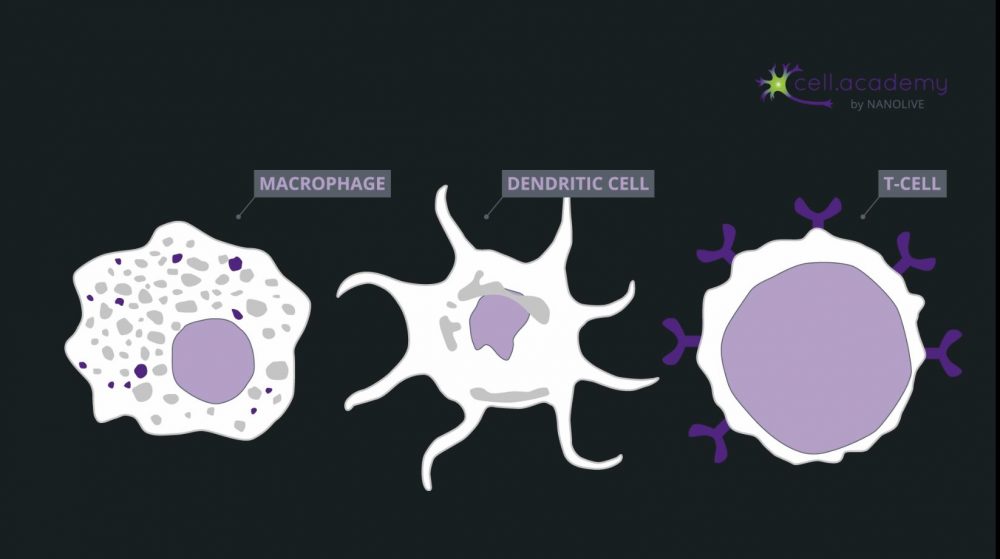
Macrophages – the cells that eat other cells
Macrophages, as their name suggests are large cells that eat others. Macrophages migrate through the bloodstream and tissues to detect pathogens or dead cells which they engulf through phagocytosis.
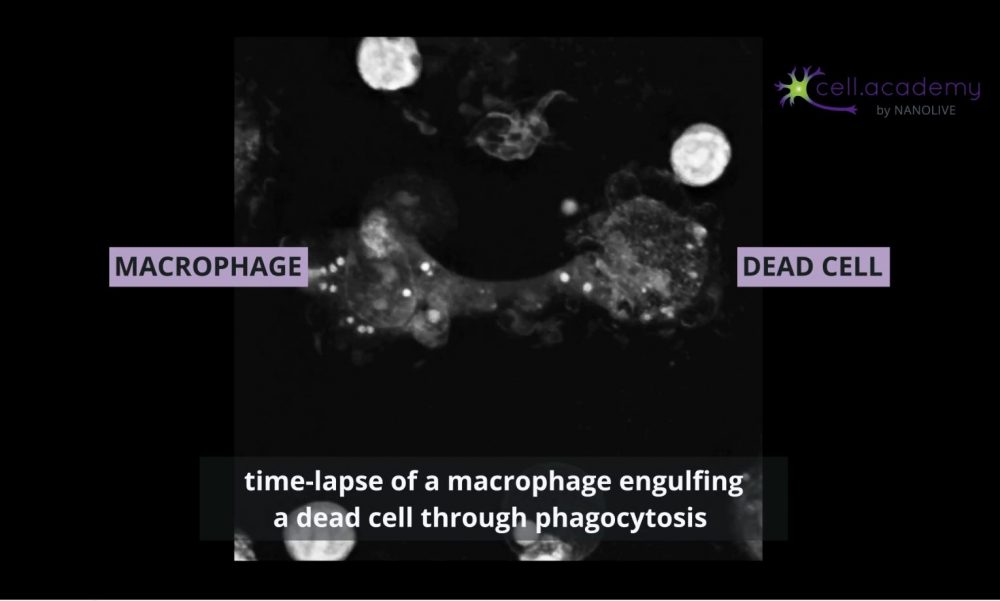
For example, if you cut yourself with a dirty knife, the bacteria will spread into your bloodstream where they encounter macrophages. In this caption below of a time-lapse of living cells, you can see E.coli bacteria being engulfed by a macrophage. Notice these shiny white dots – they are lysosomes, little organelles in the cell containing digestive enzymes which help digest the pathogen.
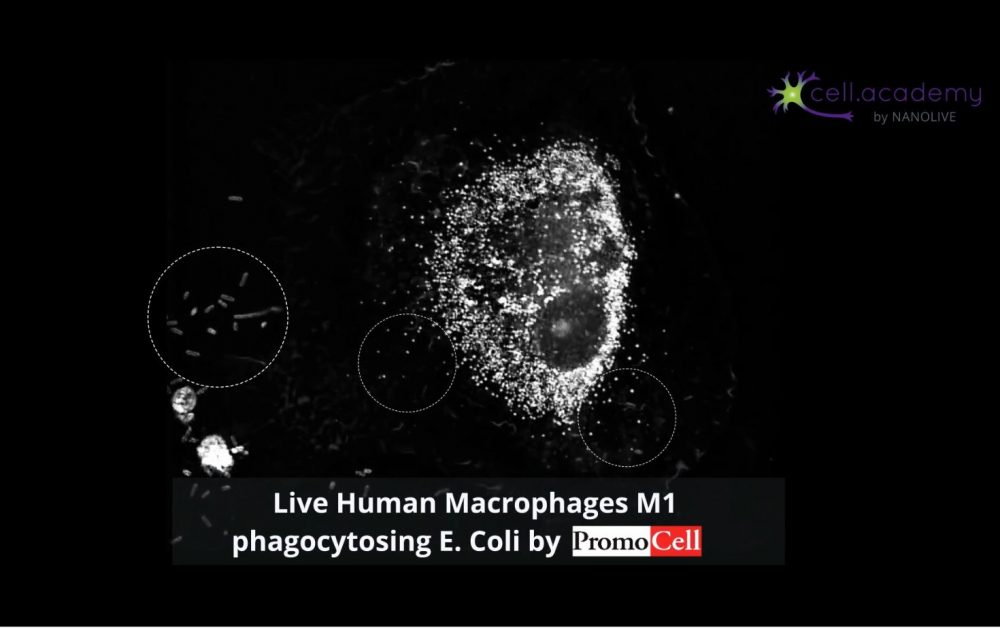
Dendritic cells – the antigen presenting cells
If the pathogen spreads and starts infecting our own cells, macrophages send an “alarm” through cytokines (chemical signals) to recruit their sister cells: dendritic cells.
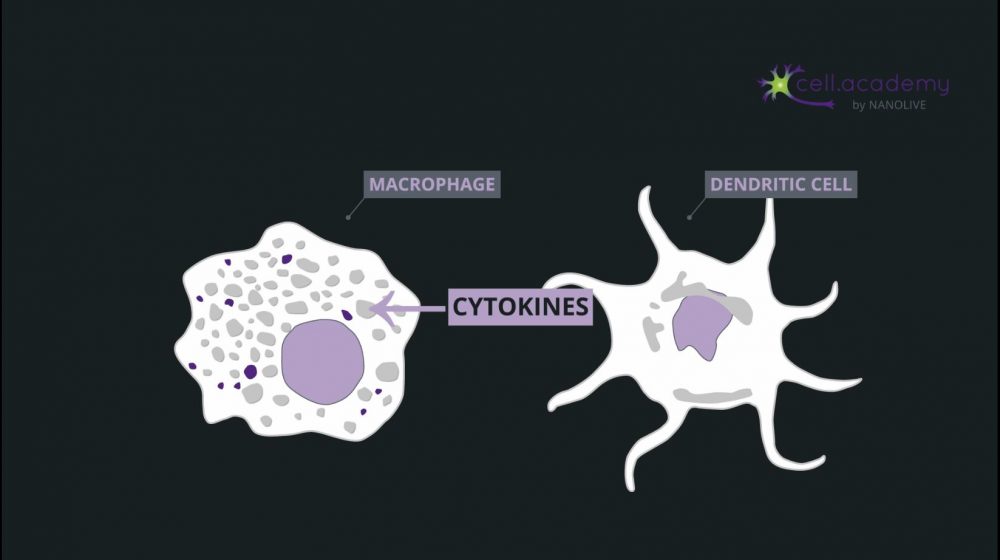
Dendritic cells are also migrating, phagocytosing cells which serve as messengers to call in the heavy artillery. They are small and recognizable by elongated protrusions of their plasma membrane giving them a star shaped form. They engulf the pathogens through phagocytosis to process the pathogen’s antigen. Antigens are comparable to identity tags which are unique to each cell type. Dendritic cells expose the foreign antigen at their surface which they present to T-cells to activate them. Macrophages also have antigen presenting capabilities, so they complement the dendritic cells in T-cell activation.

T-cells – the killer cells
T-cells are small round cells containing a large nucleus.

T-cells can also detect cancerous cells in the same way – you can see the close interaction between a T-cell and cancer cell here below.
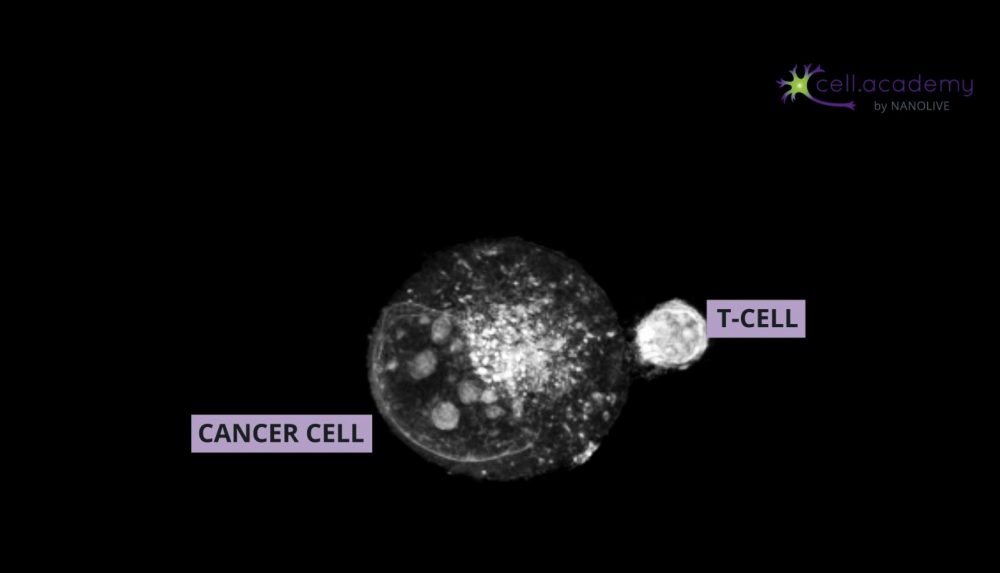
Upon activation, T-cells duplicate and migrate to the site of battle to assist the macrophages. They can identify and kill the cells that have been infected by the pathogen thanks to the antigen they have been presented by the dendritic cells or the macrophages.
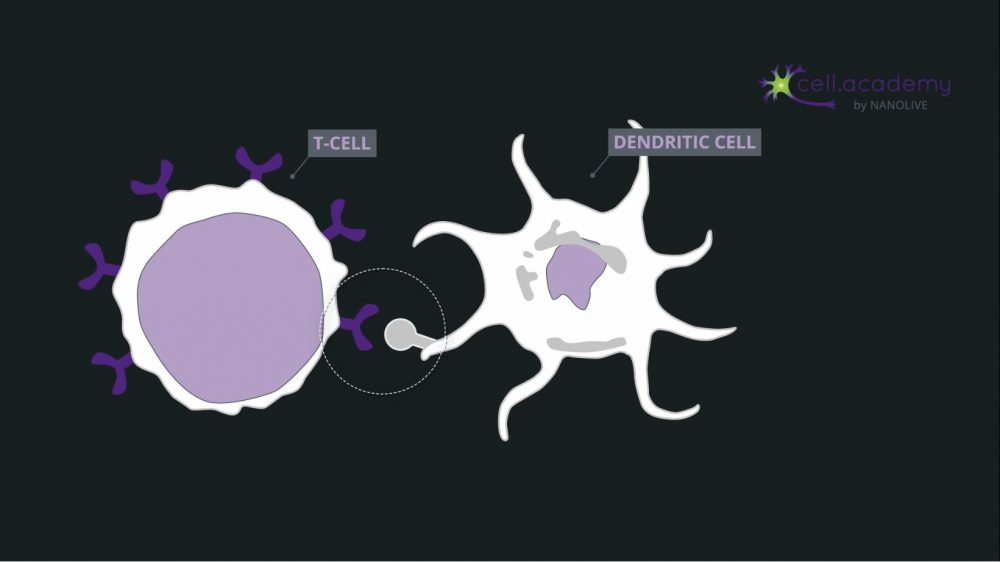
The challenge of finding cures for diseases
So, if we have such a sophisticated system to fight against infections and invaders, why are researchers constantly working on finding cures for diseases? Well, many diseases which lead to serious health consequences are due to dysregulation of the immune system, which is why external intervention is required.
One example would be AIDS, Acquired Immune Deficiency Syndrome. It starts with a virus called HIV which attacks and gradually kills a subset of T-cells called CD4.

HIV treatment aims to increase the CD4 T-cell production, because if the number of CD4 T-Cells goes beneath a certain level, this can lead to AIDS, meaning part of the immune system is not functioning correctly and exposes the infected person to all kinds of infections and health issues.
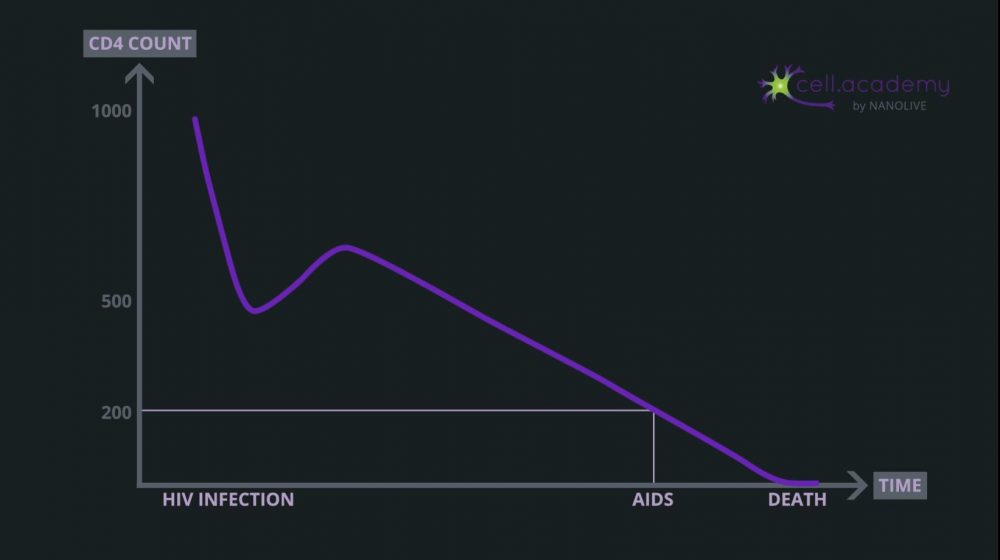
Autoimmune diseases – a dysregulation of the immune system
Some diseases are not due to external factors, but from a dysregulation of our own immune system. These are called autoimmune diseases because the cells of our immune system attack our own healthy cells. One cause of this is often a defect in T-cells, which, upon encountering a cell which has a “self” antigen identity tag, misinterprets this antigen as foreign and eliminates it. This makes it difficult to find a cure for autoimmune diseases since anything that would reduce T-cell activity would also expose the body to infections that t-cells are supposed to fight.
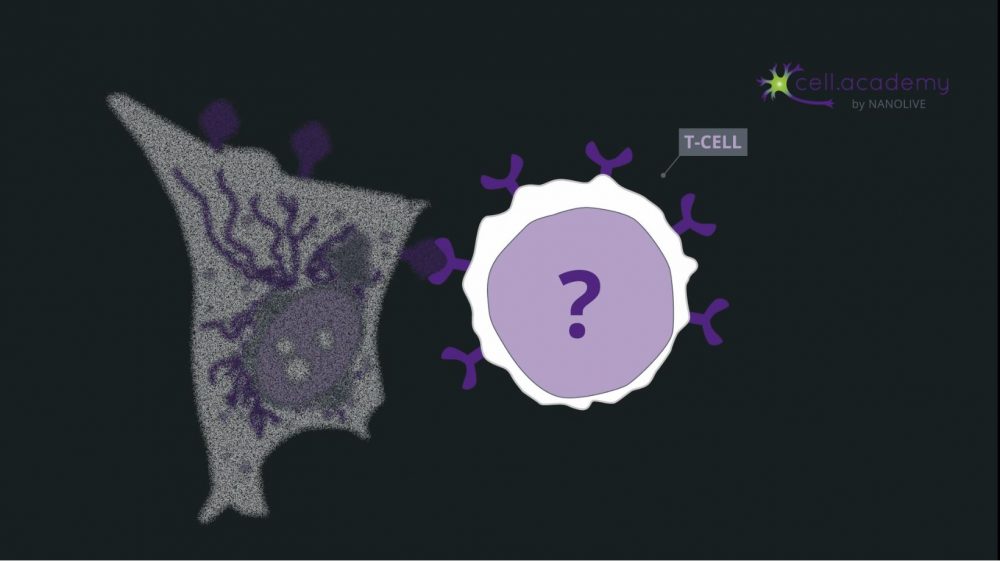
Understanding the 2018 Nobel Prize in Physiology or Medicine
So, coming back to the 2018 Nobel Prize, now that we have a brief overview of some actors in the immune system. In some cases of cancer, a tumor develops because the immune system fails to recognize the mass of cancerous cells as foreign or dangerous due to an immune checkpoint on T-cells, which is a sort of brake system that interferes with the recognition.
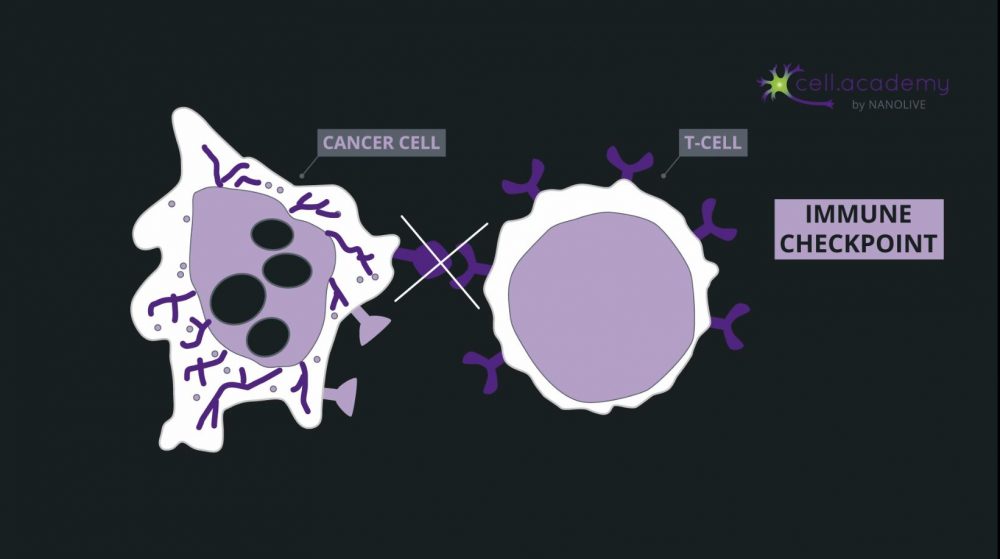
The Nobel Prize laureates’ research consisted of discovering a drug which targets this checkpoint, resulting in a release of the break on these T-cells, so they can detect the cancer cells and kill them. The caption below shows how effective activated T-cells are in killing cancer cells. The blebbing is characteristic of a dying cell.
With cancer being one of humanity’s greatest health challenges, this revolutionary research brings hope for the development of treatment.
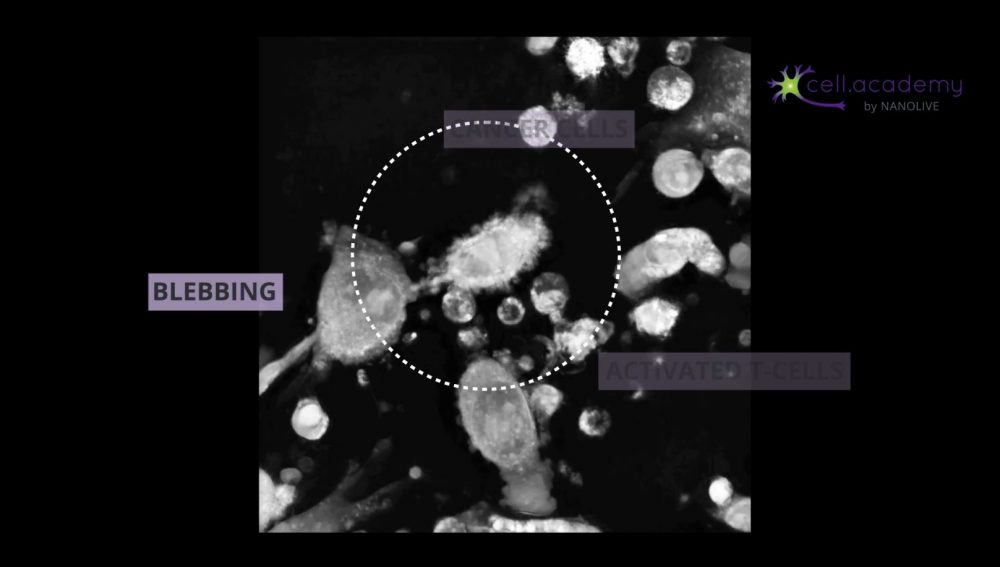
Subscribe to our YouTube channel for more educational videos!
